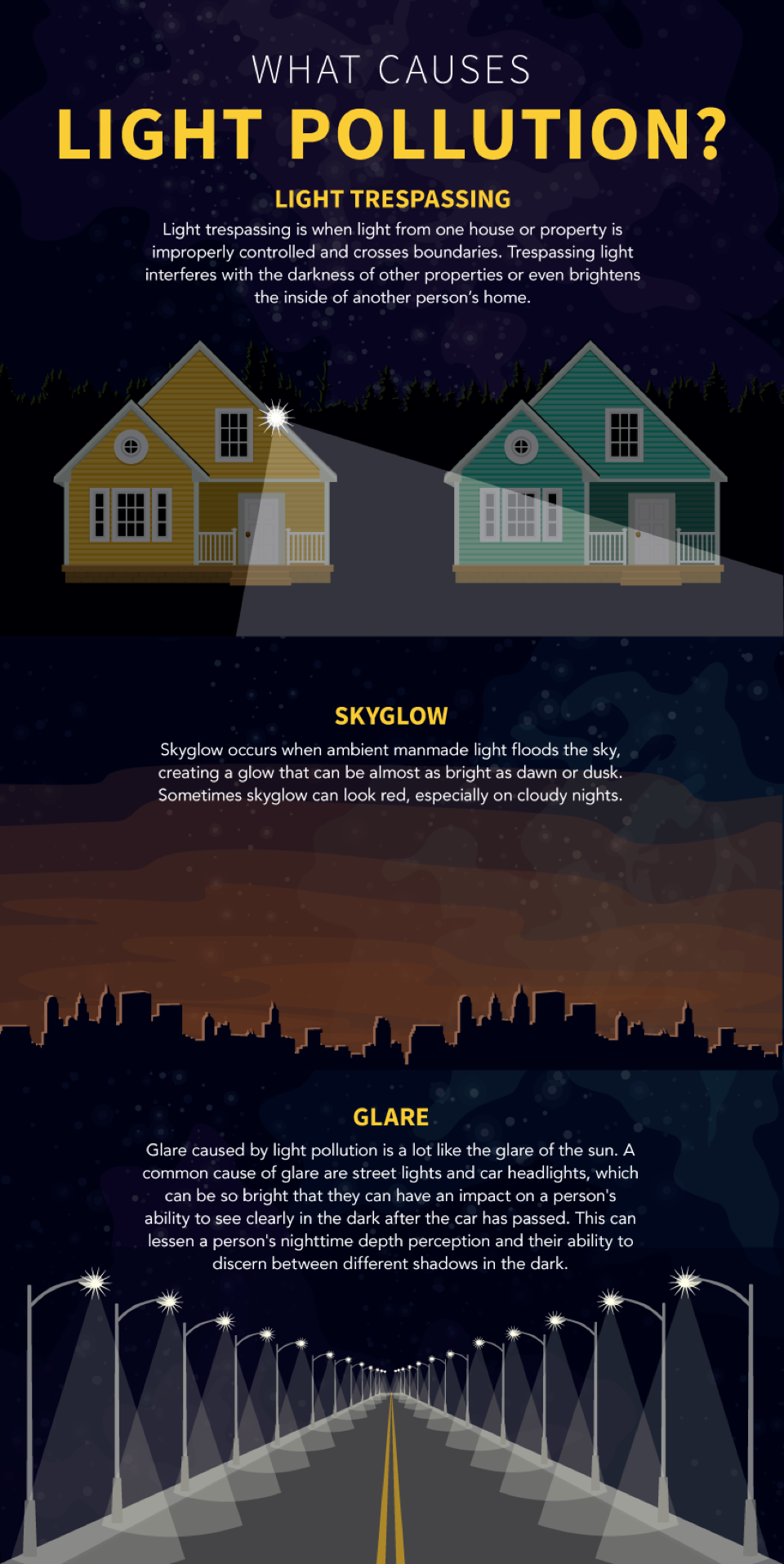There’s nothing quite as amazing as standing outside at night, staring up, and seeing millions of stars spread across the dark expanse of sky, stargazing. It’s a reminder of the enormity of the galaxy and our miniscule position in the universe. It’s also an experience that is quickly disappearing from the world.

Light Pollution
One hundred years ago, no matter where you lived, if you stood outside of your home at night and looked up, you would be able to see millions of stars and the bright swath of the Milky Way cutting across the darkness. Today, 80 percent of the world’s population lives under skyglow which is when man-made light floods the atmosphere, causing the sky to glow and effectively erasing the stars from our sight.1 In the United States and Europe, the rate bumps to nearly 99 percent of each region’s population. Light pollution now blocks views of the Milky Way from almost 80 percent of North Americans.
Looking at a picture of North America at night taken from the International Space Station, it’s easy to see why this has become the case. The photo shows huge patches of the continent where light is so powerful that the regions seem to glow. On cloudy nights, the moisture can cause light to bounce back, creating a red tint to the sky, making it seem like it’s actually glowing. This is light pollution.
Light pollution is caused by the inefficiencies of the many lights people install on their houses and businesses. In an attempt to brighten the night and erase the darkness at street level, humans have also erased the sky. While the intention is to shed light on the ground or surrounding areas, much of the light shoots in the wrong direction, including straight into the sky. Light from urban areas can extend over 100 miles, impacting neighborhoods and regions that may not even be that well lit on their own. At night, the lights from Los Angeles are visible to airplanes 200 miles away from the city.
Blackouts or power outages are one way for people to realize how much light pollution exists in their community. The unadulterated night sky is so foreign to city dwellers that, according to an article on PBS about light pollution, after a power outage in Los Angeles in 1994, “Residents reportedly called 911 to express alarm about strange clouds hovering overhead.” These clouds were the Milky Way, a celestial sight that was finally visible in the light-polluted city.2

Dark skies and the ability to see stars at night are not, however, a thing of the past. Thanks to the work of the International Dark-Sky Association, there are now parks and towns worldwide where you can experience the night sky without the interference of man-made light.
Read more #FridayFix here.
The Women's Outdoor News, aka The WON, features news, reviews and stories about women who are shooting, hunting, fishing and actively engaging in outdoor adventure. This publication is for women, by women. View all posts by The WON